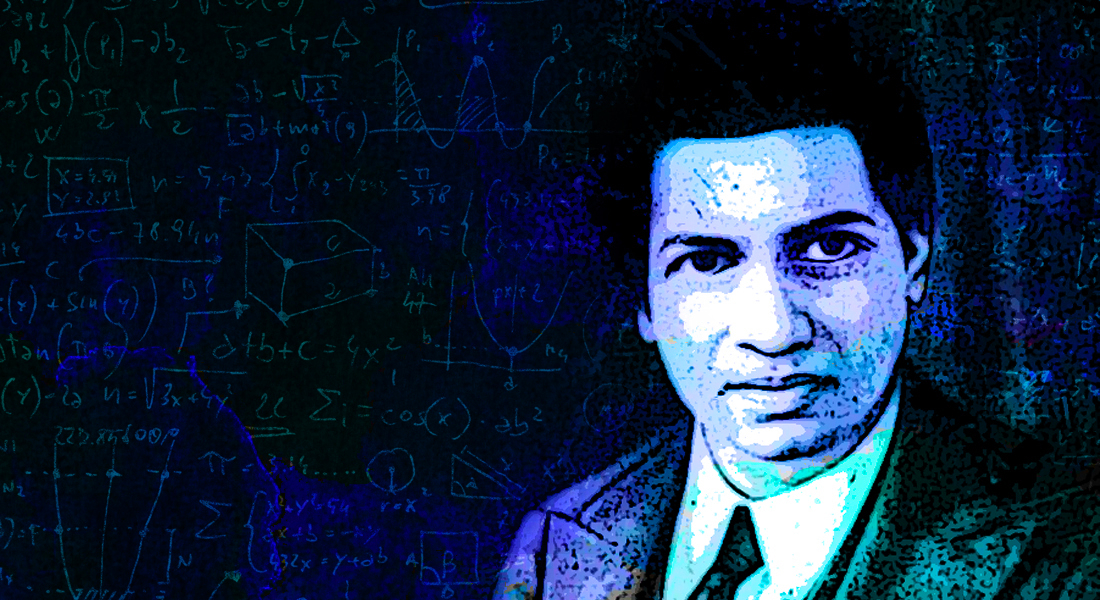
National Mathematics Day: Celebrating Ramanujan's genius

India celebrates National Mathematics Day every year on December 22 to mark the birth anniversary of India’s most famous mathematician, the legendary Srinivasa Ramanujan, whose legacy includes about 4,000 theorems.
Also read: Ramanujan’s enchanting journeys in the maze of ‘continued fraction’
In 2012, then Prime Minister, Manmohan Singh, declared December 22 as National Mathematics Day in honour of Ramanujan, to celebrate his life and achievements. This day is also celebrated to raise awareness among the people about the importance of numbers and calculations.
Also read: Math geniuses Ramanujan, Mahalanobis, and a Sunday puzzle
Singh said, “Srinivas Ramanujan’s genius was ranked by the English mathematician, G H Hardy, in the same class as giants like Euler, Gauss, Archimedes, and Isaac Newton. While we rightly claim Ramanujan as one of our own, he equally belonged to all humanity like the other great men and women in any sphere of human thought.”
Mastered trigonometry at age of 12
Ramanujan was born in 1887 in Erode, Tamil Nadu, in a humble Iyengar Brahmin family. He was a self-taught mathematician and mastered trigonometry at the age of 12.
Also read: When Ramanujan did mathemagic with a taxi number
In 1912, Ramanujan started working as a clerk at the Madras Port Trust. Some of his colleagues recognised his mathematical genius, and one of them referred him to Professor G H Hardy of Trinity College, Cambridge University. He met Hardy in 1913, after which he went to Trinity College.
Ramanujan received his Bachelor of Science (BSc) degree in 2016. He published several papers on his subject with the help of Hardy. The two worked together on several projects.
The Hardy-Ramanujan number, 1729
One of the anecdotes from his biography reveals Ramanujan’s brilliance. Hardy said, “I remember once going to see him when he was ill at Putney. I had ridden in taxi cab number 1729 and remarked that the number seemed to me rather a dull one, and that I hoped it was not an unfavourable omen.”
Also read: Rogers-Ramanujan identities are an eternal golden braid
“No,” Ramanujan replied. “It is a very interesting number; it is the smallest number expressible as the sum of two cubes in two different ways.” Thus, 1729 became the Hardy-Ramanujan number – definitely not Ramanujan’s greatest contribution, but perhaps the easiest one to remember.
Notable achievements in a young life
He was the first Indian to become a Fellow of Trinity College, Cambridge, and the second Indian and one of the youngest to become a member of the Royal Society in London.
During his short but inspirational life, Ramanujan solved seemingly-impossible theorems.
He is especially known for his work in the areas of functional equations of the zeta function, hypergeometric series, continued fractions, number theory, mathematical analysis, infinite series, and elliptic integrals.
Many books have been written on Ramanujan, the most famous one being The Man Who Knew Infinity (1991) by Robert Kanigel, which inspired a 2016 movie of the same name, starring Dev Patel, the British actor, as Ramanujan.
Also read: A century later, why the world still needs Ramanujan
The film included details on Ramanujan’s childhood in India, his time in Britain, and his journey to becoming the great mathematician he was.
Ramanujan died at the young age of 32, the year after he returned home from the UK. National Mathematics Day is a fitting way to celebrate our very own mathematics genius.


